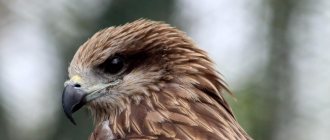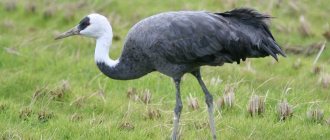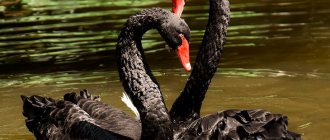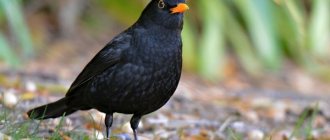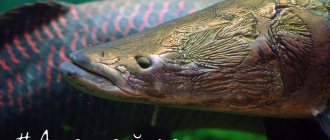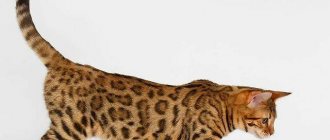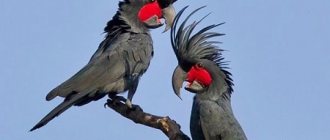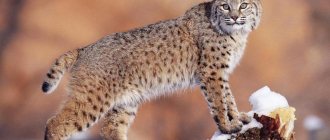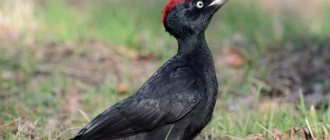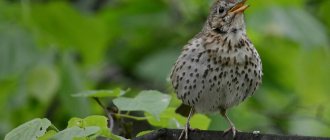- Wild animals
- >>
- Birds
The black kite is quite common in Russia. They are heat-loving, and therefore fly to warmer regions for the winter, but in the summer their lingering melodic cries are constantly heard in the skies, and these birds themselves slowly soar in the air for a long time, making only rare flapping of their wings. They do not like to hunt; they prefer to eat carrion and waste.
Origin of the species and description
Photo: Black kite
The black kite was described by P. Boddert in 1783 and received the Latin name Milvus migrans. There are a number of subspecies of this bird, two can be found in Russia: migrans with a light head, lives in Europe and the European part of Russia; lineatus inhabits the territories east of the Urals.
Previously, kites, like other large birds, were classified in the order Falconiformes, but then scientists found that the order Accipitridae should also be distinguished - although they have features that bring them closer to Falconiformes, a different evolutionary line led to their emergence. It is to this order that kites belong. It, along with some others, such as owls and coliformes, is classified as a clade of African birds, named after its place of origin. This branch emerged immediately after the Cretaceous-Paleogene extinction, or even immediately before it.
Video: Black kite
The oldest fossil remains of not yet accipitridae, but representatives of the accipitridae group, date back about 50 million years and belong to a bird called Masiliraptor. Gradually, the appearance of the representatives of the order approached modern ones, and 30 million years ago the now known genera began to appear. The kites themselves arose relatively recently: the oldest find is 1.8 million years old, and this is the already extinct species Milvus pygmaeus - that is, the black kite species arose even later.
Interesting fact: Kites can evolve not just quickly, but very quickly, literally before our eyes - for example, due to the appearance of a new species of snail in the USA, the slug-eating kites that lived there changed in two generations. The new snails turned out to be five times larger than usual and it was inconvenient for the kites to grab them with their beaks - they constantly dropped their prey.
As a result, the beak increased, as did the mass of the bird as a whole, which made it possible to significantly increase the survival rate of chicks (from 9 to 62%). The changes occurred directly in the bird's DNA. As a result, the population of slug eaters, which were previously on the verge of extinction, has grown significantly in less than a decade.
Vologda Region
Status: III category. A rare species that requires attention at the regional level.
Spreading
At the beginning of the 20th century, a rare species. In the 1950s noted on the lake. Kubenskoye, in the 1990s. 2 broods were counted annually. Nested in the vicinity. lake Katromskoye (Kharovsky district).
Number
In the Darwin Nature Reserve in the early years the population was small; in the 1960-70s. up to 16 pairs nested, then 6-7 pairs. Density in 2003-2004 amounted to 2.3-3.7 pairs per 100 km2. In 2000, in the vicinity. lake Vozhe found 2 pairs, density 0.6 pairs per 100 km2. In the vicinity Cherepovets on the coast of the Rybinsk Reservoir. nests 4-6 pairs, density in 1999-2004. 3-5 pairs per 100 km2. In general, on the Rybinsk Reservoir there are 20-30 pairs, on the Sizmensky spill of the Sheksninsky Reservoir - 4-6. Widely distributed in the region, but the numbers are higher in the west. half near large bodies of water.
Source: Red Book of the Vologda Region. Animals. Ed. H.L. Bolotova, E.V. Ivanter, V.A. Krivokhatsky (2010) Vologda, Polygraph-Book
Appearance and features
Photo: What a black kite looks like
Although the kite seems large in flight, in reality it is not that big: it is 40-60 cm long and weighs from 800 to 1,200 grams. That is, in size and weight it is inferior to crows of the species corvus corax. But its wings are large, almost like the whole body - 40-55 cm, and their span can exceed one and a half meters. Throughout its build, the kite seems light due to its long wings and tail. His legs are short and weak - he uses them little. Adult kites are dark brown in color and appear black from a distance. Young ones are lighter and may be brown. The head is lighter than the rest of the body, greyish.
The whole appearance of the kite is very expressive and predatory, especially its gaze stands out: its eyes look straight ahead, and at the same time it looks as if it is always frowning. It is easy to distinguish it from other large birds even from a distance by its forked tail. During the flight, the wings are on the same plane with the body; it simply hovers a lot, making only rare wing flaps.
It steers with the help of its tail and can perform quite complex figures for its size, although it cannot compare with the most nimble and maneuverable birds. Kites are easily recognized by their melodic voice - sometimes they produce a long trill that sounds like “yurl-yuurrl-yuurrrl”. Basically they make a different sound - a short repeated “ki-ki-ki-ki”. There is a whole set of other sounds, which can be heard much less often, because kites make them only in special situations.
Kaliningrad region
Status: II category. A rare species with a steadily declining population.
Spreading
In the Kaliningrad region it is widely distributed (forests Polessky, Novoderevensky, Dachny, Ozersky, Gvardeysky, Chernyakhovsky, Frunzensky, Nemansky, Michurinsky, Vishtynetsky, as well as forests of the Kaliningrad (Sambian) Peninsula). Inhabits old mixed forests, sparse pine forests, interspersed with open meadows, swamps, and ponds.
Number
The numbers have declined significantly in the last two decades. In forests where 3-4 pairs previously nested (Polessky, Novoderevensky, Dachny, Ozyorsky, Gvardeysky, Frunzensky, Nemansky, Michurinsky, Sheshupsky), 1-2 pairs are now recorded. In many tracts of medium-sized forests, nesting is irregular (forests of the Kaliningrad (Sambi) Peninsula, Bagrationovsky, Pravdinsky, Ozersky districts). The total number of the species in the region does not exceed 50-60 breeding pairs and varies significantly from year to year.
Source: Red Book of the Kaliningrad Region. Ed. Dedkova V.P., Grishanova G.V., Gubareva I.Yu. (2010) Kaliningrad: Publishing house of the Russian State University named after. I. Kant
Where does the black kite live?
Photo: Bird black kite
Its range includes large spaces that can be divided into three categories: territories in which they live year-round, summer nesting sites, and wintering sites. That is, some kites are non-migratory, but mostly they fly away for the winter.
Live all year round in:
- Australia;
- New Guinea;
- China;
- South-East Asia;
- India;
- Africa.
They only fly to the Palaearctic for nesting grounds - they are cold there in winter. In summer, kites live in the following areas:
- a significant part of Russia;
- Central Asia;
- Turkey;
- most of European countries;
- northwest Africa.
Partially, the territories where they winter coincide with those where permanent populations of kites live, but more often they differ due to the need to look for free territory. Thus, most of the kites fly to spend the winter in sub-Saharan African countries, where the permanent population is relatively small. The same applies to the Middle East: Syria, Iraq, southern Iran - in the summer there are no or few black kites there. Mostly young individuals spend the summer there, and over time they also begin to fly north.
In Russia they live over vast territories, but unevenly: in the northern taiga they are relatively rare, in the western part and in the Urals they are more common, and they inhabit steppe regions especially densely. It is unusual for large birds of prey to gather in large flocks to migrate. They prefer to settle in mixed landscapes, that is, those where there are bushes and trees, but also open spaces. They also live in forests. As a rule, kites can be found near bodies of water; they often settle near populated areas. They can even nest right in cities, including large ones.
Now you know where the black kite is found. Let's find out what this predator eats.
Habitat
The black kite is a fairly numerous species with a wide habitat. It has spread to Africa, Madagascar, Asia, many island areas, New Guinea and Northern Australia. The black kite is found in Russia and Ukraine. Prefers to settle in forest-steppes rich in rivers. These birds can often be found in floodplains of rivers and lakes. They can live in nesting areas even in large cities. In summer, they prefer to make nests in the branches of tall trees.
What does the black kite eat?
Photo: Black kite in flight
The bird can hunt well, but usually prefers not to do this and look for other ways to find food for itself. She is quite resourceful, for example, she often simply watches people or animals, and notices where they find food. So, kites can monitor fishermen, and they guide them to fishing spots. But even having found a place of bread, they are often in no hurry to hunt on their own, but wait until something is left for them.
They easily feed on various garbage and carrion - this is the basis of their diet. Often many kites circle around slaughterhouses at once, waiting for garbage, or even fly to the garbage dumps. Animals of comparable size are not hunted because their paws are rather weak, and they cannot carry away large prey: it is difficult for them to hold it with their short fingers. A kite can only grab a chick or a fish the size of a perch.
From live prey they catch:
- rodents;
- fish;
- amphibians;
- lizards;
- aquatic invertebrates;
- insects;
- crustaceans;
- worms
For the most part, these species live in or near water. That is why kites settle near bodies of water, because there is more prey there, and it is easier to catch it - the main factor for this bird. And even during the hunt they catch mostly sick and weak animals. This is characteristic of kites to a greater extent than other predators: they look closely at the prey in advance and determine who will have to spend less effort to catch. Therefore, they are very useful, and the population of animals living next to them does not suffer much quantitatively, since they almost do not hunt healthy ones, while improving qualitatively.
At the same time, they are sometimes considered pests: if there are a lot of kites in the area, chickens, ducklings, and goslings can suffer from them. These cunning birds can also keep an eye on tourists and, as soon as they move away from the supplies, they immediately try to steal something. And almost everything is suitable for them to eat, from sausages and cutlets to dry pasta and cereals.
Kursk region
Status: II category. A species that is declining in numbers in the region.
Spreading
It is found everywhere in the Kursk region. Until the early 90s of the 20th century - a common appearance; in the Central Chernobyl Territory it nested in all areas, occupying 2nd place after the common buzzard.
Number
By 2000, the number of breeding pairs in the reserve had decreased to one.
Source: Red Book of Kursk Region. Rare and endangered animal species. Ed. Vlasov A.A., Bausov I.A., Vlasova O.P., Grechanichenko T.E., Korolkov A.K., Lada G.A., Mironov V.I. (2002) Central Black Earth Reserve
Features of character and lifestyle
Photo: Black kite in the sky
Kites are able to soar in the sky for a long time without flapping their wings at all - and this is very consistent with their character, because they are slow and do not like to make unnecessary movements. They spend a significant part of the day this way, slowly and lazily floating in the air. Sometimes they rise to such a great height that they can hardly be distinguished from the ground. The other part of the day is devoted to searching for food: they fly around their entire area and look first for carrion, because there is no need to hunt for it. Whether a mouse died, the fishermen left fish entrails on the shore, or the river threw out the corpse of an animal - for the kite, all this is food.
If he doesn’t find such gifts, then he looks closely at the animals that are still alive. He especially likes to look for wounded animals that have escaped from hunters but are weakened. Although healthy animals are also in danger - as soon as any bird gapes, the kite will immediately grab it: it is fast and very dexterous. The kite is a territorial bird and must have its own hunting area. But most often there are not enough of them for everyone, some are left without their own land and they have to look for food on the “land” owned by others. This can lead to fights between birds. The kite lives 14-18 years, you can also find old birds that have lived for 25-28 years, and in captivity they can even live up to 35-38.
Interesting fact: The presence of decorations at a kite's nest indicates its strength: the more there are and the brighter they are, the stronger the bird. But other kites also attack the owners of the most beautiful nests more violently, if they even decide to do so. If the kite is weak and does not want to fight, then it leaves the nest without decorations.
general characteristics
Kites are predators that thrive in the air. Their distinctive feature is that without working with their wings, they can be in the sky in free soaring for about 10-20 minutes. These birds have excellent flight characteristics, allowing them to rise to great heights. All this makes it impossible to observe the flight of kites with the naked eye. At the same time, the birds themselves are quite lazy and slow when it comes to organizing their daily life.
Kites are quite large birds, measuring about 0.5 meters. Moreover, their weight can reach up to 1 kilogram. The wingspan is one and a half meters, which makes them long, despite the fact that the shape itself is quite narrow.
The appearance of kites varies depending on the variety.
The basis is brown and dark colors. Often the plumage also contains white. The limbs of kites are relatively short, the beak is hooked.
During everyday activities, the kite is capable of producing musical trills that consist of unique sounds. Birds can imitate sounds that are characteristic of other birds or even belong to animals. Their arsenal of melodies contains various motives, for example those that resemble the neighing of foals.
Kites devote a significant part of their time to searching for prey. To do this, they soar in the air, flying over hunting grounds, where they track down potential prey.
Elena
Ask a Question
Question to the expert
Why are kites found in urban areas?
This is due to the lack of food sources for birds in their natural habitat. Thus, city garbage cans and landfills become an excellent source of food for birds, which feed on carrion and human waste. Also, in urban conditions, birds can freely roost in parks and squares, where they live quite comfortably.
Social structure and reproduction
Photo: Black kite
The breeding season begins in the spring, immediately after migratory birds return to the north. Kites build nests on tall trees and choose places at an altitude of 10-12 m. They try to position the nest so that it is inconspicuous; they prefer quiet areas of the forest, where rarely anyone visits. They can also nest on rocks. The nest itself can be quite large - 0.6-1.2 m in diameter, and up to half a meter in height, in rare cases even higher. The bird remembers the location of the nest and returns to it in subsequent years until it becomes too old and unreliable. At the same time, year after year the nest is completed and becomes larger.
The material used for it is rags, sticks, grass and various debris that were found. Nests can be located either at a distance from each other or densely, several dozen on neighboring trees - the second is more typical for areas of permanent habitat. One clutch usually contains from 2 to 4 eggs, the shell is white, and almost always has brown spots on it. The eggs are incubated by the female, and the male carries food and protects the nest.
Hatching time is 4-5 weeks. During this period, the female tries to behave carefully. If a person appears nearby, he may hide so as not to give him away to those simply passing by. Or it takes off in advance and circles at a short distance, watching it, sometimes screaming in alarm. If she decides that the nest is about to be attacked, she becomes aggressive and attacks the offender: she dives threateningly at him or even tries to tear his face with her claws and peck him in the back of the head. If a person clearly approached the nest on purpose and was able to see it, the kites remember him and may pursue him.
There are cases when city birds lay in wait for such people day after day and tried to attack, even though they did not cause any damage to the nest or its inhabitants. But Indian and African individuals, which constantly live in the south, are more characterized by such aggression, while those nesting in Russia are calmer. The first down of the chicks is reddish-brown, the second is gray. Immediately after birth, they are very aggressive, fight among themselves, which can lead to the death of those who are weaker - this usually happens if there are many of them.
By 5-6 weeks they begin to leave the nest, and soon they make their first attempts to fly. By two months they become large enough to live separately, and by autumn they have already grown almost to the size of an adult bird and are usually among the last to fly south - the flight of kites begins in August and continues until mid-autumn.
Buzzard
The honey beetle is the rarest of the capital's feathered predators. The Red Book classifies it as category zero. This means that its nests have not been found in Moscow for a long time. However, the bird itself has recently been seen in large forest parks, so experts do not rule out that honey beetles may settle in the city in the future.
It’s easy to recognize him when you meet him. This bird is medium in size. The plumage is brown above, light below and speckled. The head is light gray, the eyes are bright yellow. The grayish tail has three black stripes, which are especially visible during flight.
The honey beetle prefers sparse forest areas bordering river floodplains, large clearings and meadows. It begins nesting quite late - at the end of May, beginning of June. The honey beetle is characterized by unusual mating flights, when the male hovers in one place and flaps his wings over his back. The pair builds a nest at a height of up to 12 meters, always weaving green tree branches into the walls.
The honey beetle got its name for a reason. The basis of its diet is the larvae and pupae of wild bees, bumblebees and wasps. To search for insect nests, birds carefully monitor their flight path from cover for a long time. The dense plumage on the head protects the wasp from attacks by stinging insects. The honey buzzard's diet includes other small invertebrates, as well as amphibians, rodents and birds.
Natural enemies of black kites
Photo: What a black kite looks like
There are no predators that purposefully hunt kites. Many other birds of prey, if settled next to them, get along well, for example, buzzards, spotted eagles, and goshawks. At the same time, attacks on kites by larger birds, such as eagles or gyrfalcons, are also possible, but they are relatively rare. More often, conflicts arise between the kites themselves; in such fights they can cause serious damage to each other.
Even if both birds remained alive, the wounds may prevent them from hunting and still lead to death - more kites die from the claws of their fellow tribesmen than from other birds. But this applies to adult individuals; chicks and eggs are threatened not only, and not even so much by large predators, but primarily by crows. These birds have a great tendency to destroy nests, and not even always for food; sometimes they do this when they are already full.
Once the kites are distracted for a while, the crows are already right there. Weasels and martens can also pose a threat to their nests. But still, a much larger number of kites die from human activity, primarily due to poisoning.
Interesting fact: In India, kites are especially numerous, and they are famous for their impudence. Dozens of these birds are constantly on duty at the markets, and as soon as someone throws away food, they swoop in and snatch the prey from each other. And they are not content with this, but snatch food directly from trays in eateries, sometimes even from people’s hands.
Relationship with a person
The kite is a smart bird that senses danger. It is very difficult to catch it in the wild: sensing a threat, it leaves the unsafe place forever. Keeps a distance from people.
It is possible to catch a kite and keep it at home, but it is very rare. They require careful care, a large living space, birds are picky eaters and can attack humans.
In some cases, having found a sick individual, a person is able to go out and tame the bird. More often, recovered birds are sent to zoos. If you have the opportunity and desire, domesticated kites can be purchased from specialists.
